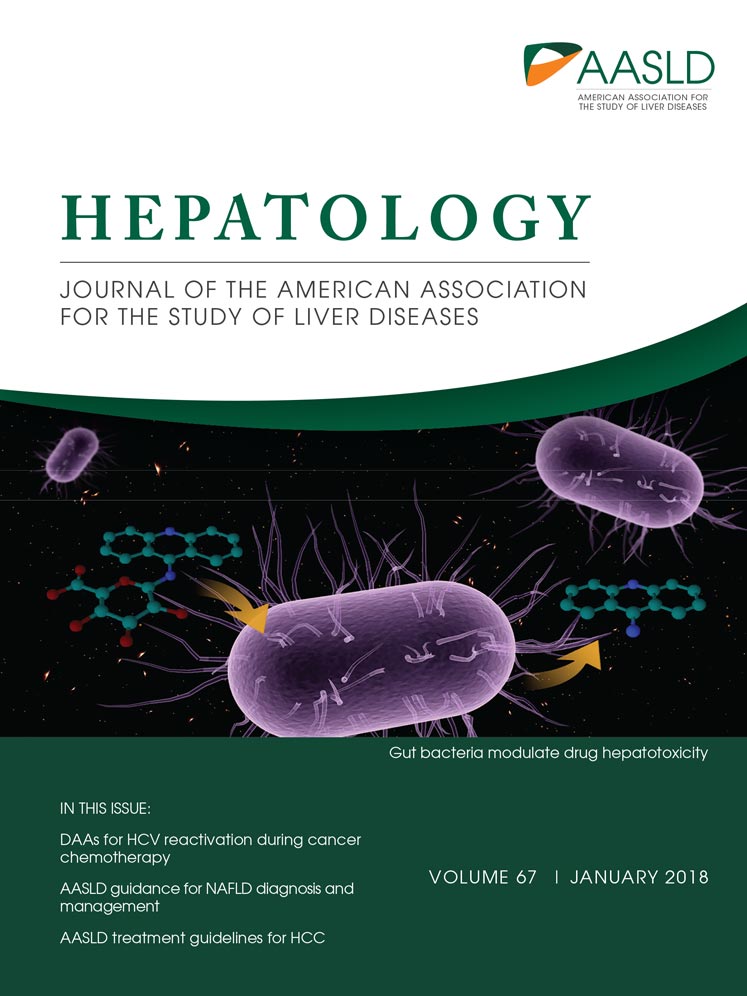Reply
Potential conflict of interest: Nothing to report.
We read the comments by Liu with great interest and would like to clarify a few issues raised on our systematic review and meta-analysis.1
We were well aware of the difference in the definition of hepatitis B virus (HBV) reactivation (HBVr) across the studies. However, due to the limited data reported in the included studies, we were unable to use a standardized definition, HBV replication ≥2 log increase from baseline levels, or a new appearance of HBV DNA to a level of ≥100 IU/mL2 to adjust the pooled results. However, we have shown in the discussion that the pooled rate of HBVr (12.2%) could be higher in patients treated with DAAs if we standardize the definition. We later performed another meta-analysis on HBVr in coinfected patients using direct acting antivirals (DAAs) including only cohort studies, and the pooled HBVr from seven studies including 535 patients was 24%.3 In this case, we may have underestimated the risk of HBVr after using DAAs. A standard nomenclature is required to better estimate the rate of HBVr and predict clinically significant outcomes due to HBVr.
Only two cohort studies were published by the time we conducted the meta-analysis (Wang4 and Gane5). Thus the interpretation of the pooled results of hepatitis due to HBVr needs to be cautious. However, it is shown in our review and later a review of cases reported to the US Food and Drug Administration6 that HBVr and hepatitis due to HBVr occurred much earlier than after the use of interferon-based therapy, and hepatitis due to HBVr was more severe with death being reported.6
With careful prospective serial serological testing, it is now known that HBVr during immunosuppressive therapy is a two-stage process. The disruption in the ability of the host immune system due to immunosuppressive therapy leads to markedly enhanced viral replication that is reflected by increases in serum levels of HBV markers (e.g., HBV DNA). With the restoration of immune function following withdrawal of immunosuppressive therapy, there is rapid immune-mediated destruction of HBV-infected hepatocytes, resulting clinically in hepatitis, hepatic failure, and death. The two-stage process provides possible explanation on how the HBV DNA level at baseline predicts HBVr in the setting of immunosuppressive therapy. However, HBVr in the context of DAAs for HCV is unexpected, and the mechanism is unknown, because DAAs are not known to be directly immunomodulatory, with their mechanism of action specifically targeting HCV nonstructural proteins. Although our conclusion that the baseline HBV DNA level was not associated with HBVr relied primarily on case reports, our most recent meta-analysis in cohort studies using DAAs still showed that the baseline HBV DNA level was not associated with HBVr.6 Also, neither of our studies support preemptive anti-HBV Nucleos(t)ide analogs (NUC) therapy before DAA therapy, irrespective of ethnic differences. Further study is needed to better understand the mechanism of HBVr in the context of DAAs.
-
Guo-Feng Chen, M.D., Ph.D.1,2
-
Cheng Wang, M.D., Ph.D.1,3,4
-
George Lau, M.D., Ph.D.1,4,5,6
-
1Beijing 302-Hong Kong Humanity and Health Hepatitis C Diagnosis and Treatment Center
-
Beijing, China
-
2Second Liver Cirrhosis Diagnosis and Treatment Center
-
302 Hospital
-
Beijing, China
-
3State Key Laboratory of Organ Failure Research
-
Guangdong Key Laboratory of Viral Hepatitis Research
-
Department of Infectious Diseases
-
Nanfang Hospital
-
Southern Medical University
-
Guangzhou, China
-
4Humanity and Health Research Centre
-
Hong Kong SAR, China
-
5Division of Gastroenterology and Hepatology
-
Humanity and Health Medical Centre
-
Hong Kong SAR, China
-
6Institute of Translational Hepatology
-
302 Hospital
-
Beijing, China
Author names in bold designate shared co-first authorship.




